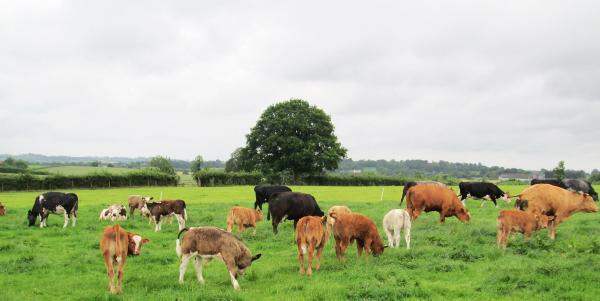Alan Cairns, Aghalee, Co Antrim
Grazing conditions over the past month have been excellent. The rain last week came at just the right time to boost grass growth, which had started to suffer.
I am always hesitant to say we could do with rain, but with so much of the grazing area having been taken out for silage and hay over the month of June, many of the paddocks had low grass covers and required added moisture to kick-start regrowth again.
In total, I gathered 254 bales of silage from 45 acres where grass surpluses were appearing. If I had not removed this, not only would grazing quality have been compromised as much of this was beginning to head, but utilisation would have been poor and much of this grass would have been wasted.
I doubt if it will show up as being high quality silage, but the bales have been marked and it will do nicely as dry cow feed.
These paddocks with heavier covers would have required topping had they been grazed, so the additional cost of baling does not seem that expensive.
Closing off surplus grass on grazing grounds had temporarily reduced grazing days ahead. Nevertheless, growth rates have taken off again over the past week and paddocks earmarked for grazing over the next month will be producing high-quality after-grass, which should help drive weight gain.
The harvesting of first-cut silage was delayed until late May due to the wet weather, which left very heavy yields. I applied 2,500 gallons of slurry per acre and three bags of 25:0:13 and 7.5% sulphur.
Second-cut is coming along well and should be ready by the end of July. I find that delaying the harvesting of second-cut into August not only reduces quality but also limits the fields’ grazing potential thereafter.
I have also taken advantage of the good growing conditions to spray docks on silage and grazing areas. While there are lots of options on the market, I generally get good results and a quick kill from Forefront, although this is not clover safe. I also used Squire in May on any swards with high levels of white clover to good effect.
This year, 95% of cows were calved by the end of May and all cows are now calved. This has taken three years to reach this point through gradually removing the bulls earlier each year and to bring on sufficient heifers.
Calving went well this year and I now have probably the best batch of calves I have ever had on the farm. This is the first year that all replacements are homebred and I can now see the results of using more maternal Simmental and Limousin bulls on the herd.
In the past, I would have anticipated that I would be compromising on calf quality going down this route. But if anything, the use of the Simmental has improved calf quality and I am seeing the results of hybrid vigour in calf growth.
I have been particularly happy with the quality of calves sired from the bull I purchased last year, Slievenagh Duncan. This was the first bull I purchased based on estimated breeding values (EBVs).
So far, his calves have been born without assistance, as well as having good growth rates and conformation. Bulls were turned out on 1 June. Two Simmentals, a Limousin and Charolais are covering cows, with a Hereford being used on heifers.
This week, I have been getting up-to-date with animal health. Calves are receiving their blackleg vaccines and 2013-born bullocks and heifers are receiving their first treatments for stomach and lungworm.
For many, this may be a fairly easy task. But having so much rented land with poor handling facilities and one labour unit, this takes some planning and is very time-consuming.
Animal health issues in general have improved over the past year, which I would mainly put down to having a settled herd with no replacements purchased over the past year and calving significantly tightened.
One legacy from bringing in stock over the years has been digital dermatitis. This is an infectious condition caused by bacteria which leads to the creation of lesions on cattle feet.
I am trying to get on top of this before autumn as the housed environment will lead to further spreading of the bacteria. Animals affected are easily identified as they tend to go lame quickly.
I am separating affected animals and using a combination of foot bathing and antibiotic treatment to treat them. This is not an easy process with suckler cows.
The difficulty this presents only strengthens the case for breeding replacements from within the herd and my resolve to improve biosecurity for the suckler cow enterprise.






 This is a subscriber-only article
This is a subscriber-only article










SHARING OPTIONS: